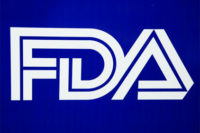Dairy Operations
Optimizing the total value of operations in dairy
Understanding total cost of operation helps improve profitability

In today’s highly competitive dairy marketplace, owners and operators of dairy production facilities are focused on meeting or exceeding key performance metrics, such as improving yields, minimizing waste and saving water and energy, in order to maximize the efficiency and profitability of their operations. Typically, these metrics are tracked by unit operation, with the focus almost exclusively on reducing cost of operation as a proxy for maximizing performance. Examining all of the cost components that go into production provides owners and operators an opportunity to understand their Total Cost of Ownership (TCO), which is a logical way to improve a plant’s profitability.
Holistic approach can bolster earnings
Recently, however, a growing number of dairy producers have been working with Solecta to more holistically assess their operations. They are finding that this holistic approach is a difference maker in terms of bottom-line profitability.
In these engagements, Solecta uses an approach it calls Total Value of Operation (TVO), which it developed as an adaptation of TCO. While TCO focuses on an asset’s cost components, Solecta’s TVO process, while not dismissive of cost, expands the view. It assesses the total operation rather than just a unit process, searching for ways to optimize asset utilization to drive revenue growth. Said another way, TVO answers the question, “How can an asset be most effectively used to maximize financial return?”
Optimizing complex dairy processing
The holistic TVO approach to process optimization is becoming more important as dairy processing becomes increasingly complex. What historically may have been a one or two-unit operation has evolved today into operations with multiple process separation steps that are both complex and intertwined. Understanding these interconnections and how they affect total performance is critical.
Thinking only about cost-out, which focuses on opportunities to remove or reduce operational costs, is limiting, because it ignores opportunities for value expansion across a range of process components. For instance, if a dairy plant owner or operator considers the ultrafiltration (UF) separation process, how is increased protein yield captured in a cost-out model? By changing the perspective to value delivery, it is easy to see that Solecta’s TVO approach encompasses both cost containment and revenue growth across multiple components, including clean-in-place chemicals, labor, maintenance, water, wastewater, utilities and product yield.
However, while increased value can be created by process improvements in all of these areas, Solecta’s experience is that they are not created equally. More than half of the total dollar impact can be realized by focusing on increasing product yields.
Structured approach
Solecta uses a consistent approach to TVO implementation, based on its domain expertise and experience in the field of separations, to thoroughly understand a client’s specific needs and challenges in order to clearly define the project, establish success criteria, confirm leadership commitment and determine how success will be measured. Defining clear goals is also critical to success. Goals must be SMART: specific, measurable, attainable, relevant and timely.
After clearly establishing the goals, the next step in implementing the TVO methodology involves the collection of data. Data that is captured, such as, flow rates, temperatures, or product compositions, varies greatly from plant to plant. Analysis of the data and how a process is performing over time is essential to establishing a baseline, highlighting potential issues and quantifying improvements. In many dairy plants, data is often collected manually, making it more challenging to see changes over time and quickly correct issues that, if not promptly resolved, can result in significant product loss.
Whey protein
An increasingly important end-product in many dairy processes is whey protein. The market for whey protein continues to grow as its uses expand into a variety of consumer products, including nutritional snacks and high protein sports beverages. As a result, owners and operators of dairy plants are looking for ways to improve whey protein yields to take advantage of emerging opportunities.
The first membrane separation step in whey protein concentrate production is ultrafiltration (UF), where whey protein is captured as the concentrate and lactose, minerals and small amounts of protein not retained by the UF are captured in the permeate stream. Typically, spiral-wound polymer UF membrane elements are used for this process.
Under normal use conditions, these elements require frequent clean-in-place (CIP) treatment to maintain performance levels and hygienic conditions. However, over time the cleaning process starts to degrade the membrane surface, negatively impacting performance and allowing increasing amounts of protein into the permeate stream where it ultimately gets lost. When the loss becomes significant, the elements are replaced.
The industry norm is for owners and operators of dairy plants to replace elements after a predetermined period of time. However, it is Solecta’s position that replacing them based on their performance levels makes much more sense financially.
The TVO approach in action
The power of Solecta’s TVO approach was evidenced by the results of a recently completed project working with the plant manager of a dairy processing facility located in the Western U.S. The plant manager faced the challenge of improving the financial performance of the whey operation and was looking for ways to confidently deliver on key performance indicators (KPIs). Importantly, he understood the potential value that could be delivered by bringing in outside resources to help fine-tune the plant’s operations.
The project was specifically designed to improve the plant’s financials and meet corporate continuous improvement (CI) goals, both vitally important to the client. This was achievable because TVO and CI are complementary concepts. For this client, one of the mutually agreed upon goals was to improve recovery of whey protein in the production of whey protein concentrate (WPC80). The goal was further refined to improve the yield resulting in greater than 100% return on investment based on annual element spend.
Delivering results
Assembling a key list of data to collect and helping the client capture it electronically was a critical step in understanding how key performance criteria were changing over time. Working collaboratively with the client, Solecta was able to help establish baseline performance for capacity, yield and quality and build confidence that the underlying analytical data was accurate and dependable.
Understanding the complex connections between operation steps upstream and downstream from whey concentration highlighted opportunities for process optimization and value capture. Following a detailed audit and clearly understanding capacity requirements from upstream processes allowed Solecta to recommend the best combination of UF elements to deliver the greatest protein capture while not constraining the overall whey process. And understanding how increasing levels of protein in the UF permeate negatively impacted downstream reverse osmosis (RO) separation performance and resultant water quality helped to clarify and quantify the potential impact of proposed changes in monetary terms.
Improvement in whey protein yield was a critical driver for the client, so metrics were developed that could be tied directly to membrane element performance. By looking at both protein concentration and permeate flow, the “real” loss (or gain) of protein over time was understood.
Understanding at what point element replacement makes the most sense financially led to the establishment of performance-based protocols for replacing the ultrafiltration elements rather than solely replacing them based on time-in-use. In addition, understanding and optimizing the clean-in-place (CIP) procedures resulted in concrete ways to save water and energy and reduce consumption of key cleaning chemicals.
Using a data-based approach and understanding the nuances of the production by looking both upstream and downstream, Solecta provided data to the client to clearly and quantitatively show the optimal change out timing, as well as ways to streamline the overall process to improve performance, save water and energy, and reduce chemical use. Close collaboration and staying true to the Solecta TVO process resulted in an increase in protein capture valued at more than $395,000. In addition, there was a 15% reduction in rinse water usage and a 25% reduction in chemical usage, all verified by the client’s finance team.
Derek Hibbard is a Solecta Vice President who focuses on the dairy market. Solecta, Inc. employs advanced membrane technologies to provide highly selective, energy efficient separation solutions to the dairy industry and other industry sectors. Derek has spent more than two decades helping clients in the dairy industry address and solve important issues that are critical to their business success. He can be reached at derek.hibbard@solectamembranes.com.
Looking for a reprint of this article?
From high-res PDFs to custom plaques, order your copy today!





